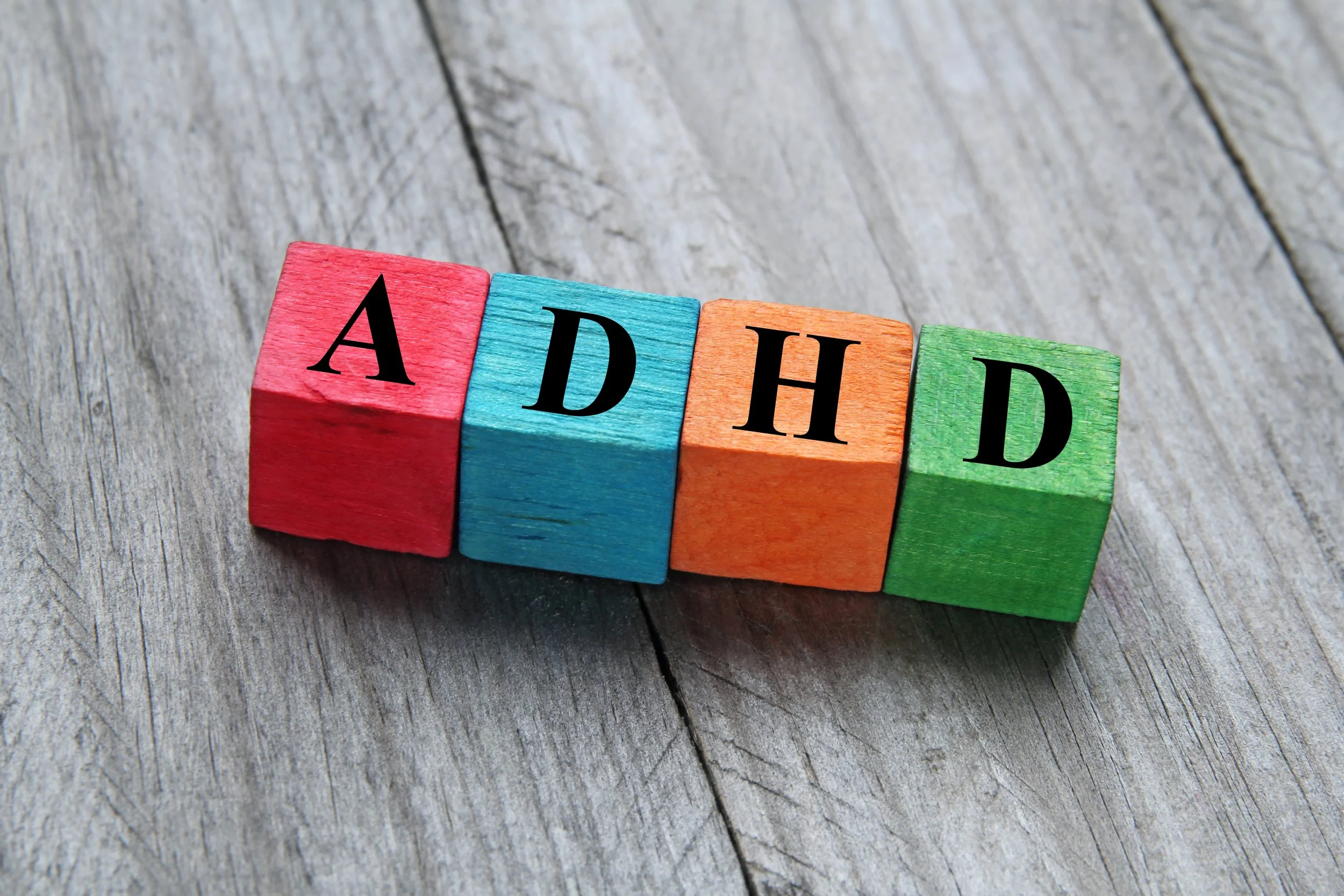
PTSD vs. C-PTSD: Understanding the Differences
When people talk about trauma, the term “PTSD” often comes up. But in recent years, another diagnosis has gained recognition: Complex Post-Traumatic Stress Disorder (C-PTSD). While both involve the lasting impact of trauma, they are not the same. Understanding the differences can help individuals find the right kind of support and healing.
When people talk about trauma, the term “PTSD” often comes up. But in recent years, another diagnosis has gained recognition: Complex Post-Traumatic Stress Disorder (C-PTSD). While both involve the lasting impact of trauma, they are not the same. Understanding the differences can help individuals find the right kind of support and healing.
What is PTSD?
Post-Traumatic Stress Disorder (PTSD) typically develops after experiencing or witnessing a single traumatic event—or a few distinct traumatic events. These events often involve life-threatening situations, such as:
Military combat
Natural disasters
Serious accidents
Assault or violent crime
Symptoms of PTSD often include:
Flashbacks or intrusive memories
Nightmares
Hypervigilance or being “on edge”
Avoidance of reminders of the trauma
Emotional numbing or detachment
PTSD is the mind and body’s way of staying on alert after something overwhelming and unsafe has happened.
What is C-PTSD?
Complex PTSD (C-PTSD) develops from ongoing or repeated trauma over time, especially in situations where a person feels trapped and powerless. This might include:
Chronic childhood abuse or neglect
Domestic violence
Long-term captivity, trafficking, or oppression
Repeated emotional, physical, or sexual abuse
In addition to the core PTSD symptoms, people with C-PTSD often experience:
Deep shame or guilt
Difficulty trusting others
A negative self-image (“I’m worthless,” “I’m broken”)
Emotional regulation struggles (intense anger, sadness, or numbness)
Persistent feelings of helplessness or hopelessness
Challenges with relationships and attachment
While PTSD may feel like the nervous system is “stuck in the past,” C-PTSD often feels like trauma has woven itself into a person’s sense of identity and daily life.
Why the Distinction Matters
Recognizing the difference between PTSD and C-PTSD is important for healing. Traditional PTSD treatments may not fully address the relational wounds, shame, and chronic stress patterns seen in C-PTSD. Complex trauma often requires a slower, gentler, and relationship-focused approach to restore safety and self-worth.
Pathways to Healing
The good news is that both PTSD and C-PTSD are treatable. Therapy can help you reconnect with your body, process memories safely, and begin to rewrite the story trauma has left behind. Helpful approaches may include:
EMDR (Eye Movement Desensitization and Reprocessing)
Somatic and body-based therapies
Trauma-informed cognitive or narrative therapy
Supportive group therapy or community connection
Final Thoughts
Whether you identify with PTSD or C-PTSD, you are not alone—and what happened to you does not define your worth. Healing may look different for each person, but with the right support, it is possible to find peace, strength, and connection again.
At Summit Family Therapy, I specialize in working with trauma survivors, helping them gently rebuild safety, self-trust, and resilience. If you’re ready to take the next step in your healing journey, I invite you to schedule a session with me, Dr. Courtney Stivers.
The Benefits of Connecting Mind and Body for Mental Health
When we think about mental health, we often imagine thoughts, feelings, or brain chemistry. But the truth is, our mental well-being is deeply connected to our physical selves. The body and mind are not separate systems—they are constantly in conversation. When we learn to connect the two, healing becomes more whole, more sustainable, and more empowering.
When we think about mental health, we often imagine thoughts, feelings, or brain chemistry. But the truth is, our mental well-being is deeply connected to our physical selves. The body and mind are not separate systems—they are constantly in conversation. When we learn to connect the two, healing becomes more whole, more sustainable, and more empowering.
Why the Mind-Body Connection Matters
Stress, anxiety, depression, and trauma don’t live only in our heads. They show up in our bodies, too—tight shoulders, upset stomachs, racing heartbeats, fatigue. This is because our nervous system, hormones, and immune system all respond to emotional experiences. Ignoring the body when we’re caring for our mental health is like trying to listen to half of a conversation.
By noticing and supporting the mind-body connection, we can create more balance and resilience.
Key Benefits of Mind-Body Connection
1. Better Stress Regulation
Breathing techniques, gentle movement, and mindfulness practices calm the nervous system, helping the body shift out of “fight or flight.” When the body relaxes, the mind follows.
2. Improved Emotional Awareness
Tuning into the body helps us notice early signs of stress or emotional overwhelm. A racing heart, shallow breath, or muscle tension can become cues to pause, reset, and take care of ourselves before emotions feel unmanageable.
3. Healing from Trauma
Trauma often lingers in the body long after the mind has tried to move on. Practices like yoga, EMDR, grounding exercises, or somatic therapy help release stored tension and create a sense of safety in the body again.
4. Increased Resilience and Energy
When we nurture both body and mind—through movement, sleep, nutrition, and mindful awareness—we support the whole system. This makes it easier to recover from stress, adapt to challenges, and feel more energy for daily life.
5. Greater Self-Compassion
Learning to listen to the body with curiosity (instead of judgment) teaches us to treat ourselves with kindness. That gentleness toward our bodies often translates into more compassion for our thoughts, emotions, and overall self.
Ways to Strengthen the Mind-Body Connection
Practice mindful breathing or meditation.
Try gentle movement like yoga, stretching, or walking.
Use grounding techniques (noticing what you see, hear, feel in the present moment).
Keep a journal of body cues and what emotions they may signal.
Work with a therapist trained in somatic or trauma-informed approaches.
Final Thoughts
Connecting the mind and body is not about perfection—it’s about awareness. By paying attention to the signals our bodies send and responding with care, we can support our mental health in powerful, lasting ways. Healing happens not just in our thoughts, but in every breath, heartbeat, and step forward.
If you’re ready to begin exploring the mind-body connection in your own life, I’d love to walk alongside you. As a trauma-informed therapist, I help individuals find healing, balance, and resilience through both emotional and somatic approaches. Give my practice a call at 309-889-4290.
Yoga and Mental Health: How Mindful Movement Supports Emotional Well-Being
In today’s fast-paced world, it’s easy for stress, anxiety, and emotional overwhelm to take hold. Many people are seeking ways to support their mental health beyond talk therapy, medication, or traditional self-care. One powerful approach that has gained recognition in both clinical and wellness communities is yoga.
In today’s fast-paced world, it’s easy for stress, anxiety, and emotional overwhelm to take hold. Many people are seeking ways to support their mental health beyond talk therapy, medication, or traditional self-care. One powerful approach that has gained recognition in both clinical and wellness communities is yoga.
Yoga is more than stretching or physical exercise—it is a practice that integrates the mind, body, and breath, helping individuals cultivate awareness, balance, and resilience. Research has shown that yoga can positively impact mental health by reducing stress, improving mood, and supporting emotional regulation.
How Yoga Supports Mental Health
1. Reduces Stress and Anxiety
Yoga encourages mindful breathing and relaxation, activating the parasympathetic nervous system—the body’s natural “rest and digest” response. This helps lower cortisol levels, calm the mind, and reduce the physical symptoms of stress and anxiety.
2. Improves Emotional Regulation
Through consistent practice, yoga helps individuals notice and respond to their emotions with awareness rather than react impulsively. This can be particularly beneficial for managing anger, frustration, or anxiety.
3. Enhances Mind-Body Connection
Trauma and chronic stress can disconnect us from our bodies, leaving us feeling tense, numb, or unsafe. Yoga emphasizes grounding, body awareness, and gentle movement, helping reconnect the mind and body in a safe, supportive way.
4. Boosts Mood and Resilience
Physical movement, breathwork, and mindfulness practices in yoga stimulate the release of endorphins and serotonin, improving overall mood. Regular practice also builds resilience, helping people cope with challenges more effectively.
5. Supports Trauma Healing
Certain forms of yoga, especially trauma-informed yoga, provide a safe environment for people to explore sensations, release tension, and regain a sense of control in their bodies. When combined with therapy, yoga can complement emotional healing in profound ways.
6. All Bodies Are Welcome
Yoga is for everyone—regardless of age, size, ability, or experience. Our approach emphasizes adaptation and accessibility, ensuring that each person can participate safely and comfortably. The practice is about connecting with your body, not achieving a specific pose or appearance. All bodies deserve to move, breathe, and experience the healing benefits of yoga.
Tips for Incorporating Yoga into Mental Health Care
Start small: Even 10–15 minutes a day can make a difference.
Focus on breath: Mindful breathing is often more impactful than the poses themselves.
Seek trauma-informed classes: Look for instructors trained to support people with trauma histories.
Combine with therapy: Yoga can complement counseling by enhancing self-awareness, stress reduction, and emotional regulation.
Be gentle and patient: Yoga is a journey, not a performance. Progress is measured in awareness, not flexibility.
Final Thoughts
Yoga is not a cure-all, but it is a powerful tool to support mental health. By integrating movement, mindfulness, and breath, individuals can cultivate a stronger mind-body connection, reduce stress, and foster resilience.
At Summit Family Therapy, I encourage clients to explore approaches like yoga alongside therapy to support holistic well-being. If you are ready to combine mind-body practices with evidence-based therapy for mental health, I invite you to schedule a session with me, Dr. Courtney Stivers, and begin your journey toward balance, healing, and emotional wellness.
For women seeking a supportive, healing environment, consider joining an upcoming Women’s Trauma Recovery Workshop. It’s a safe space to connect, process trauma, and explore tools—like yoga and mindfulness—that can empower your mental and emotional well-being.
ADHD and Rejection Sensitive Dysphoria: You’re Not “Too Sensitive”
At Summit Family Therapy, we know that living with ADHD isn’t just about managing focus or organization—it’s about navigating the emotional ups and downs that come with it. One of the most tender and often misunderstood struggles is Rejection Sensitive Dysphoria (RSD). If this resonates with you, know that you’re not alone, and there is a path toward understanding and healing.
At Summit Family Therapy, we know that living with ADHD isn’t just about managing focus or organization—it’s about navigating the emotional ups and downs that come with it. One of the most tender and often misunderstood struggles is Rejection Sensitive Dysphoria (RSD). If this resonates with you, know that you’re not alone, and there is a path toward understanding and healing.
If you live with ADHD, chances are you’ve been told at some point that you’re “too sensitive,” “overreacting,” or “taking things too personally.” What people don’t always realize is that for many with ADHD, rejection doesn’t just sting—it can feel crushing. This experience has a name: Rejection Sensitive Dysphoria (RSD).
What RSD Feels Like
RSD can make a small comment feel like a deep wound. A piece of feedback that’s meant to be constructive might leave you questioning your worth. An unanswered text can feel like abandonment. Even imagining that someone might be disappointed in you can spark shame, sadness, or anger.
It’s not drama. It’s not weakness. It’s a real and painful part of how the ADHD brain processes relationships and emotions.
Why It Hurts So Much
Growing up with ADHD often means hearing messages like, “Try harder,” “Why can’t you focus?” or “You’re not living up to your potential.” Over time, those words stick. They create tender spots that make any hint of rejection feel amplified.
And because ADHD brains crave connection, belonging, and encouragement, rejection can feel like losing something essential—like oxygen.
The Hidden Cost
Living with RSD often means walking through the world with invisible armor. You might avoid sharing your ideas at work, not because you don’t have something valuable to say, but because you’re terrified of being shut down. You might bend over backwards to please people so you don’t risk disapproval. Or you might pull away from relationships altogether, telling yourself it’s safer not to get too close.
But that armor, while protective, can also be heavy. It keeps you from showing up fully as yourself.
You Are Not Alone
Here’s the truth: so many people with ADHD know this exact pain. You are not broken. You are not “too much.” You are a human being with a tender heart, one that feels rejection deeply because connection matters to you.
Finding Your Way Forward
RSD may always be part of your experience, but it doesn’t have to define your life. A few things that can help:
Self-awareness. Remind yourself: “This is RSD talking. It feels real, but it’s not the whole story.”
Compassion. Speak to yourself the way you would to a friend: with patience, warmth, and kindness.
Support. Surround yourself with people who see your sensitivity as strength, not flaw. Therapy can also help you learn tools to manage the intensity when it hits.
Permission to feel. Emotions aren’t wrong. They are signals of how much you care. Letting them flow—without shame—can be healing.
A Final Thought
RSD can make life feel overwhelming at times, but it’s also a reflection of your incredible capacity for love, empathy, and connection. The same sensitivity that makes rejection hurt so much is the same sensitivity that allows you to show up deeply for others.
You don’t need to harden your heart to survive. You just need to learn how to hold it gently.
If you see yourself in these words and are ready for support, our team at Summit Family Therapy is here to walk with you. Together, we can explore tools for managing RSD, strengthening self-compassion, and building the kind of connection you deserve.
Can You Fix Your Family?
I have noticed a significant reoccurring pattern in several of my client’s stories these past few weeks and thought it might be helpful to share my thoughts on this with others.
There are some amazing families out there who are loving, securely attached, have healthy boundaries, and fulfill individual emotional needs in balanced ways.
The short answer is no. You cannot fix your family.
I have noticed a significant reoccurring pattern in several of my client’s stories these past few weeks and thought it might be helpful to share my thoughts on this with others.
There are some amazing families out there who are loving, securely attached, have healthy boundaries, and fulfill individual emotional needs in balanced ways. They handle big feelings and give grace for the human imperfections that are in even the best of us. They address conflicts and repair hurts in relationships. Yet, many of the adult clients who end up in my office do not come from such a family. Often, a big part of their recovery is identifying patterns they learned from their family of origin, such as attachment styles, communication, and handling conflict.
I love this quote from Brené Brown, Rising Strong, about an exercise that she does with people:
“Folks write down the name of someone who fills them with frustration, disappointment, and/or resentment, and then I propose that their person is doing the best he or she can. The responses have been wide-ranging...One woman said, 'If this was true and my mother was doing the best she can, I would be grief-stricken. I'd rather be angry than sad, so it's easier to believe she's letting me down on purpose than grieve the fact that my mother is never going to be who I need her to be.'"
The bad news is that you cannot heal the dysfunction in the family you grew up in. If that was hard to read, read it again. It is not your role to save your parents/caregivers now, nor should it ever have been your job growing up. Let that responsibility go. It is keeping you stuck, sick, and sad. Maybe they will change and maybe they won’t. It is not up to you and it never was.
There is a very real grief process that comes along with the acceptance of that reality. All of us have expectations and dreams about what we hope life looks like, and this includes our family relationships. To lead healthy and wholehearted lives, we must make peace with the very real limits of others.
The good news is that you can change your own life.
You can grow.
You can parent differently and stop those generational patterns.
You can accept yourself as worthy of love and belonging.
You can freely give empathy because of the struggles you endured.
You are not doomed to repeat the past.
You can learn new ways to communicate.
You can set boundaries.
You can take the good parts of your family and limit the parts that are harmful.
You can make a new family.
You can cultivate authentic relationships based on love, emotional/physical safety, deep connection, grace, compassion, courage, joy, and showing up for each other. Not sure where to start? Give our office a call at 309-713-1485.
Coping with COVID 19: Is My Current Sadness Really Grief?
Are you having trouble identifying your feelings during the COVID 19 pandemic? You might be experiencing grief. In a recent Harvard Business Review, foremost expert on grief and author David Kessler, states there is a 6th stage of grief. Kessler co-wrote with Elisabeth Kubler-Ross about the 5 stages of grief—denial, anger, bargaining, depression and acceptance. In Kessler’s new book, Finding Meaning: The Sixth Stage of Grief, he says that after acceptance stage there can be meaning. He is also the founder of www.grief.com.
Are you having trouble identifying your feelings during the COVID 19 pandemic? You might be experiencing grief. In a recent Harvard Business Review, foremost expert on grief and author David Kessler, states there is a 6th stage of grief. Kessler co-wrote with Elisabeth Kubler-Ross about the 5 stages of grief—denial, anger, bargaining, depression and acceptance. In Kessler’s new book, Finding Meaning: The Sixth Stage of Grief, he says that after acceptance stage there can be meaning. He is also the founder of www.grief.com.
Kessler states that:
We are feeling a number of different griefs, it feels like the world has changed and it has. We are hoping it’s only temporary but it doesn’t feel that way. There’s a loss of normalcy; fear of economic toll; and the loss of connection. We are not used to this kind of collective grief in the air.
We may also be feeling anticipatory grief because the future is uncertain. Typically, this happens with an impending death or receiving a dire diagnosis. Anticipatory grief is confusing. We know there’s potential for bad things to happen. We sense a loss of safety, but we can’t see it. We no longer feel safe.
It’s important to understand that there isn’t a map for grief or for the grieving. People manage their grief in different ways and in unpredictable timelines. I won’t get the virus—denial. I have to miss my activities and stay home—anger. If I social distance for two weeks, I’ll be fine—bargaining. Will this ever end? —sadness. Ok, I have to figure this out—acceptance. We find power in acceptance.
Unhealthy anticipatory grief is really anxiety about the unknown. We imagine future worst-case scenarios. We don’t want to dismiss this anxiety. The goal needs to be finding balance in the things you are thinking. Not everyone who gets sick, will die. By staying in the moment, being mindful, you can calm yourself. Name five objects in the room. Breathe. I’m okay.
Let go of what you can’t control. Be compassionate. Be patient. People aren’t their “normal selves right now.” The most troubling part of this pandemic is the open-endedness of the situation. This is temporary even though it feels like forever.
Kessler identifies the sixth stage as finding meaning after acceptance. We want/need to find meaning in suffering. This might look different to different individuals, groups, and societies depending on their circumstances and experiences.
Take time to feel your emotions, name them and allow them to move through you. Leave the “would of, could of, should of” out of your feelings.
Most of us tend to identify grief in relation to a death. Grief can also be experienced from any loss —loss of relationship, loss of job/career, loss of home, loss of financial security, loss of a pet, and loss of a dream.
If you or someone you know is struggling with grief, it’s important to seek out professional help with a qualified therapist. What has been your hardest loss to cope with?
Resources
Berinato, S. (2020, March 23). That discomfort you’re feeling is grief. Harvard Business Review. https://hbr.org/2020/03/that-discomfort-youre-feeling-is-grief








